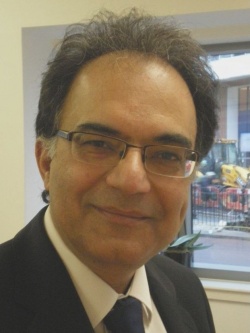Human error – or a fault in the system?
Medication errors sit among the top ten causes of harm to patients. They can, of course, occur in any department, but it’s still a surprise that they happen as frequently in anaesthetics departments, considering anaesthetists’ expertise is in handling tricky medication. However, apparently they are not the fault of the professional, but of the nature of the processes.
Report: Karoline Laarmann

‘Only one percent of human failures in a hospital emerge out of incompetence. 99% of the time, people are trying to do a good job,’ explained Professor Ravi P Mahajan, Head of University Division of Anaesthesia and Intensive Care at Queen's Medical Centre, Nottingham, UK .
Speaking on the reasons behind medication mistakes and their prevention at the Euroanaesthesia Congress in Amsterdam in June, Prof. Mahajan said: ‘In terms of progress, we first need to change our thinking about errors. We need to build up a safety culture in hospitals that is open, capable of learning and adjustable – and this would include everybody in the hospital team, from senior manager to clinician, to nurse. Secondly, we need to improve our managing systems, closing the loopholes which still allow for mistakes to propagate.’
In terms of human failure, he said in our EH interview that errors are less about doctors’ medical knowledge and more about a lack of awareness among hospital staff in general. ‘Only recently, I went to operating theatre and picked up an ampoule to find that the name of the drug was written in German. Probably, somebody went out to look for a cost-effective supplier without realising that inadequate labelling of drugs puts patients at risk. If I had been in a hurry in a lifethreatening situation, I might have been tempted to make a guess and just deliver the drug to the patient. So, in this situation, I would be lost in a system that set me up to make a mistake. We have to think about how we can improve these systems so that humans are less likely to make errors.’
Failure spots lurk in various places – drugs storage, safety design, staffing in the operating theatre, etc. Many hopes are pinned on smart electronically solutions. Here, healthcare can learn a lot from other industries, where technologies are already in the line of duty when it comes to managing processes, Prof Mahajan continued: ‘Every aubergine that you buy in a supermarket can be tracked down to the field it comes from. Why can’t we do the same with our hospital drugs? Barcode systems are a good example how technology devices can be adapted.’
One of those tools was tested last year in a national study (Staender SE, Mahajan RP; PM ID:21330916) by the Royal College of Anaesthetists and National Patient Safety Agency (NPSA). The system was firstly described in Auckland, New Zealand, and then adapted in seven UK hospitals (pilot sites for the study). It works like a hotel electronic mini bar and includes many helpful features, such as storing potentially harmful drugs, such as adrenalin or potassium, separately from the routine drugs, and also an automated record system. So, every time an ampoule is taken from the fridge, a label is attached and scanned into the computer system, so that the individual medication is registered in the logistics centre. In addition, as a decision aid, the name of the drug, its prescription, possible interactions with other drugs, potential allergies and other important details are shown onscreen. Therefore, doublechecking with a second physician is no longer necessary. This device showed considerable success in reducing error rates and workflow. Such small reminders, Prof. Mahajan believes, provide accurate services in medication safety. ‘They are like the seatbelt in a car that restrains us from making mistakes. Any hope that technology can give us in the prevention of medication error now and in the future, is a good thing.’
20.06.2011










